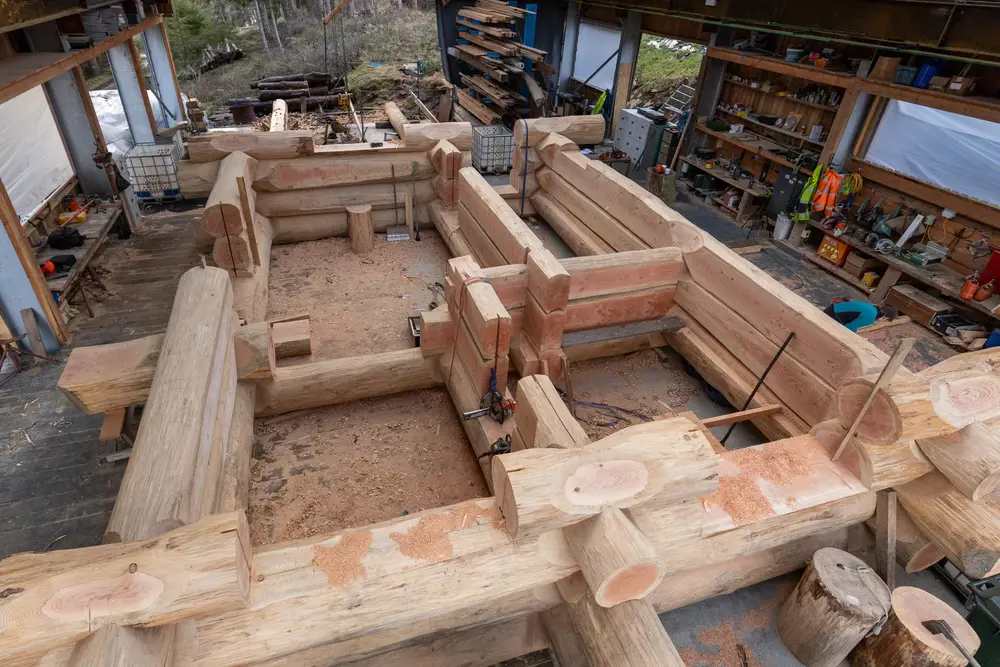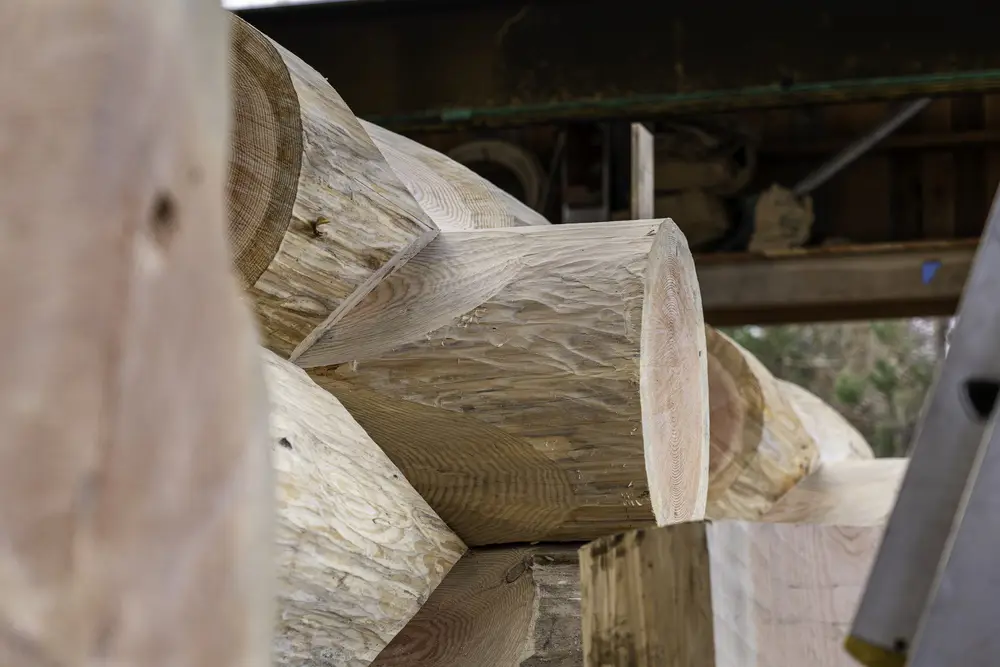Steep-ground trees used in log cabin build

We recently provided logs the length of a double decker bus to a specialist carpenter for a full-scale log house.
The house is being constructed by Bedrock Buildings Ltd. and will be moved to a plot of land in Tomich where it will be rebuilt in early summer.
The finished structure will use a total of 52 massive, 100-year-old Douglas fir logs.
The logs were harvested by highly skilled contractors at Duffy Skylining as part of our A82 steep ground harvesting programme as they’re getting too large for the landscape, causing a potential risk for landslips along the popular tourist road. The team is having to hand cut the firs using a chainsaw because of their size and location on the hillside.
While most of our timber is sold to major sawmillers, who have extensive buying powers, these logs have been supplied to Ross Balharry, owner of Bedrock Buildings Ltd, underlining the importance of local markets throughout the industry.
Speaking about the project, Graham Godsman, our Marketing and Sales Business Manager said,
“This is the type of initiative that we will be looking to support in future through our upcoming local marketing strategy; it’s important we reach out to small and medium sized businesses who may not have the capacity or resources to compete for large scale contracts or who may require to purchase niche products and species from us.”
The local marketing strategy will allow us to work with smaller businesses and craftspeople such as Ross, who are looking for special timber in small quantities and who would otherwise struggle to purchase timber in the volumes we usually market.

Ross Balharry peeling the top layer of the bark and wood off by hand using a draw knife. Each log is hand peeled before they can start fitting it for the structure.
Because the Douglas fir along the A82 is being felled by hand, our contractor was able to work closely with Ross to hand pick the pieces he needed for the build.
"Working with FLS and Calum Duffy has been great: knowing that the requirement was a bespoke order, for log cabin construction, they helped to find practical solutions throughout, from order to cutting spec, purchase, and collection.
I was given an opportunity to view and select logs at the felling site, allowing for detailed assessment and measuring up, prior to purchase. This was a huge benefit for me with regards to planning and logistics," said Ross.
Ross founded Bedrock Buildings in 2001 after building his first log cabin with his brother when they were teenagers.
“The current project is a log house for my mother, a modest 100m² one bedroom build, with mezzanine floor and large verandah. We’re still at the beginning of our journey but hope to have four full time employees by the end of the year and aim to construct two to four projects like this a year, “said Ross.
The log work (peeling, scribing, cutting and assembly) takes place mostly in the workshop and yard. Here they are building the cabin in sections before disassembling it and moving the materials to the final location. Then, in a matter of days, the logs will be reassembled after which work on the roof, floors, and windows will begin.

The logs are carved out using chainsaws and hand tools such as these (above) to ensure the timber fits together. The lateral grooves are sealed with a P-gasket and wool insulation during assembly at its final location.

These Douglas firs have only travelled around 18 miles from where they were felled along the A82 over Loch Ness.
- A82 operations
- The technology helping us modernise forestry
- Dig deeper: revealing the ruins of Brunell Township